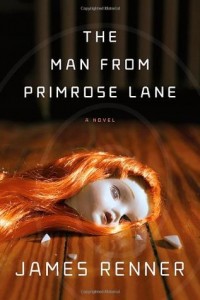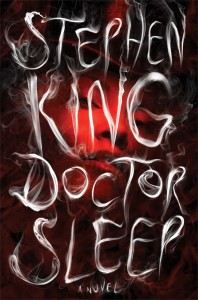The Man from Primrose Lane (2012)
By James Renner
365 pages
The Man from Primrose Lane is an effective crime thriller and character study that builds steadily for its first two-thirds, then zings us in its final third by charging full bore into the realm of science fiction. Whether you accept this final twist (although Renner points us toward it for much of the novel) will likely determine whether you like this book.
 Structured expertly by fellow Ohio author Renner, story proper involves a once-famous true-crime writer inching back from years of depression following a personal tragedy. David Neff found great and early success writing about serial killers. Now he lives comfortably off residuals, and finds solace (and insecurity) in his role as a father.
Structured expertly by fellow Ohio author Renner, story proper involves a once-famous true-crime writer inching back from years of depression following a personal tragedy. David Neff found great and early success writing about serial killers. Now he lives comfortably off residuals, and finds solace (and insecurity) in his role as a father.
The death of a local oddball, the titular character also known as “the man with a thousand mittens,” plunges David back into the true-crime game. But first he has to strip himself of the antidepressant that stifles his writing and investigative instincts. Renner makes a point of writing realistically about the effects of antidepressant drugs and the dangers of divesting oneself from them, though this concern seems to drift away once the novel shifts into high gear.
There’s a lot here to digest: two love stories, interludes, a father-son tale, past crimes and the present-day crimes they intersect, serial killers, mobsters, hidden family secrets and of course sci-fi machinations.
I appreciate Renner’s careful prose, his deliberate writing. It brings weight to what might otherwise have been a routine police procedural; it keeps the novel from spinning off into absurdity once the sci-fi element reaches its fevered pitch. I like Renner’s insights into journalism—he knows his way around a newsroom, how editors and reporters talk. I like his presentation of crime details, his use of cop-speak, and especially the way his story pauses for bold strokes of characterization, including bittersweet time-spanning interludes involving a son trying to come to terms with and avenge his father’s untimely death.
David’s beloved wife, Elizabeth, is particularly well-realized. During a classroom meet cute she is quickly sketched as a quirky, damaged woman. But Renner deepens the character as the story unfolds; despite being presenting mostly in flashback and moments of reflective emotion, she really becomes one of the book’s most vivid characters.
As the book slides between past, present and the future—sometimes within the same scene—we get the sweep of David’s life: a brash, intelligent young man; an empowered, loving husband; a regretful son; a disillusioned, recovering author; a yearning middle-ager with reawakening sexual desires; a frightened, hopeful father.
Gradually we realize the novel’s major theme is obsession. What we first take as grief, then a dogged pursuit of answers, grows into something much darker. David is given disturbing means to follow his obsessions to harrowing depths.
The crime story aspect is the book’s engine, though. It keeps us turning pages. (Renner’s true-crime background pays off in spades.) Personally I would have been content without the genre-bending shakeup of the final third. The crime story, characters and well-written prose were enough carry me through the book. But, hey, I’m not going to fault the author for trying something different with a well-worn genre.
The book’s a treat for Akron, Ohio, residents like myself, with its spot-on detailing of local roads, communities, restaurants, public figures and landmarks. The cities of Mansfield and Cuyahoga Falls and the state of Pennsylvania also figure into the plot. Of course Cleveland—in current and future forms—looms large here.







